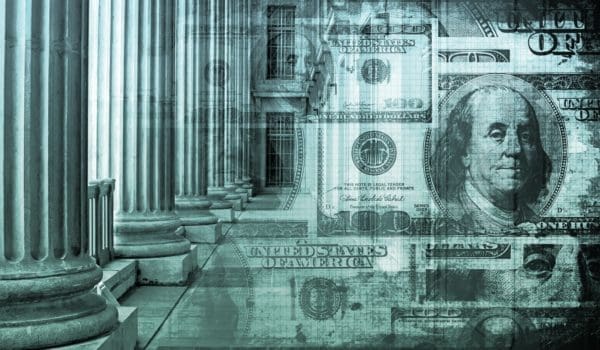The Federal Reserve recently released a publication discussing the potential of a central bank digital currency (CBDC) and how it might impact the U.S. money and payments landscape. Dialogue around the potential use of CBDCs has taken place in other nations among their central banks. The Federal Reserve has studied CBDCs for several years to gain an understanding of what a potential CBDC might look like for the United States. The Federal Reserve makes it clear, however, that its recent publication should not be construed as advancing any specific policy outcome, nor does it signal that the Federal Reserve will make any imminent decisions regarding a U.S. CBDC.
The Federal Reserve has invited stakeholders to submit comments by May 20, 2022, on the benefits, risks, policy considerations, and design of a U.S. CBDC.
Central Bank Digital Currency
In the context of the publication, the Federal Reserve defines a CBDC as “a digital liability of the Federal Reserve that is widely available to the general public.” The use cases for CBDCs vary, but the Federal Reserve appears primarily interested in investigating the use of a CBDC as an additional type of central bank money available to the public, one that would allow the public to make digital payments. The main difference between a CBDC and the digital money the public is familiar with today (i.e., the money held in accounts at commercial banks, known as “commercial bank money”) is that a CBDC would be central bank money that does not carry the same credit or liquidity risk that commercial bank money might, however slight that risk may be due to federal deposit insurance.
The Federal Reserve, in its analysis to date, suggests that if a U.S. CBDC were to be created, it would best serve the needs of the United States if it were designed to include the following elements:
- Privacy to balance the privacy rights of the individual with the transparency required to deter criminal activity.
- An intermediated CBDC that would allow the private sector, likely commercial banks and regulated nonbank financial service providers, to offer accounts or digital wallets to manage CBDC holdings and payments while keeping the liability on the Federal Reserve.
- The CBDC to have the ability to be transferred seamlessly between different intermediaries.
- A CBDC would have to verify the identity of the person accessing CBDC as financial institutions verify their customers today.
Beyond that, the Federal Reserve identifies potential benefits of a CBDC as: (1) offering the general public broad access to digital money free from credit and liquidity risk; (2) improving cross-border payments; (3) helping to preserve the international role of the U.S. dollar as the world’s reserve currency; (4) allowing for access to digital payments to financially vulnerable communities; and (5) extending public access to another form of central bank money,[1] as the use of cash has decreased in recent years.[2]
Alongside the benefits, the Federal Reserve further identifies the risks and policy considerations for a CBDC. Those are: (1) a potential fundamental change to the structure of the current U.S. financial system by changing how the central bank and private sector operate; (2) the potential outflow of funds from commercial banks during a financial panic; (3) the effect on monetary policy; (4) the difficulty of balancing consumer privacy and the prevention of financial crimes; and (5) cybersecurity threats as a CBDC network may potentially have more entry points than existing payment services.
Takeaways
While the Federal Reserve expressly states that it does not intend the publication to be a signal that it will make any decisions about issuing a CBDC any time soon, it asserts that the Federal Reserve will take further steps towards developing a CBDC if a CBDC were superior to alternatives and if the research on a CBDC shows that the benefits would outweigh the risks. The Federal Reserve is seeking comment on a list of questions on the benefits, risks, policy considerations, and design of a CBDC as part of its public discussion with stakeholders.[3]
Stakeholder comments are to be submitted no later than May 20, 2022. Comments will be made available publicly, including the names and addresses of the commenters.
If your financial institution would like to discuss CBDC impact on your pact or other blockchain and cryptocurrency initiatives, please contact Courtney Rogers Perrin, Nancy Presnell, Chris Brubaker, or any attorney in Frost Brown Todd’s Blockchain industry team.
[1] The only current publicly available central bank money being cash.
[2] The use of cash in the United States declined from 40 percent of transactions in 2012 to 19 percent of transactions in 2020.
[3] The full list of questions can be found on pages 21-22 of the Money and Payments publication and answers can be submitted at https://www.federalreserve.gov/apps/forms/cbdc/.

